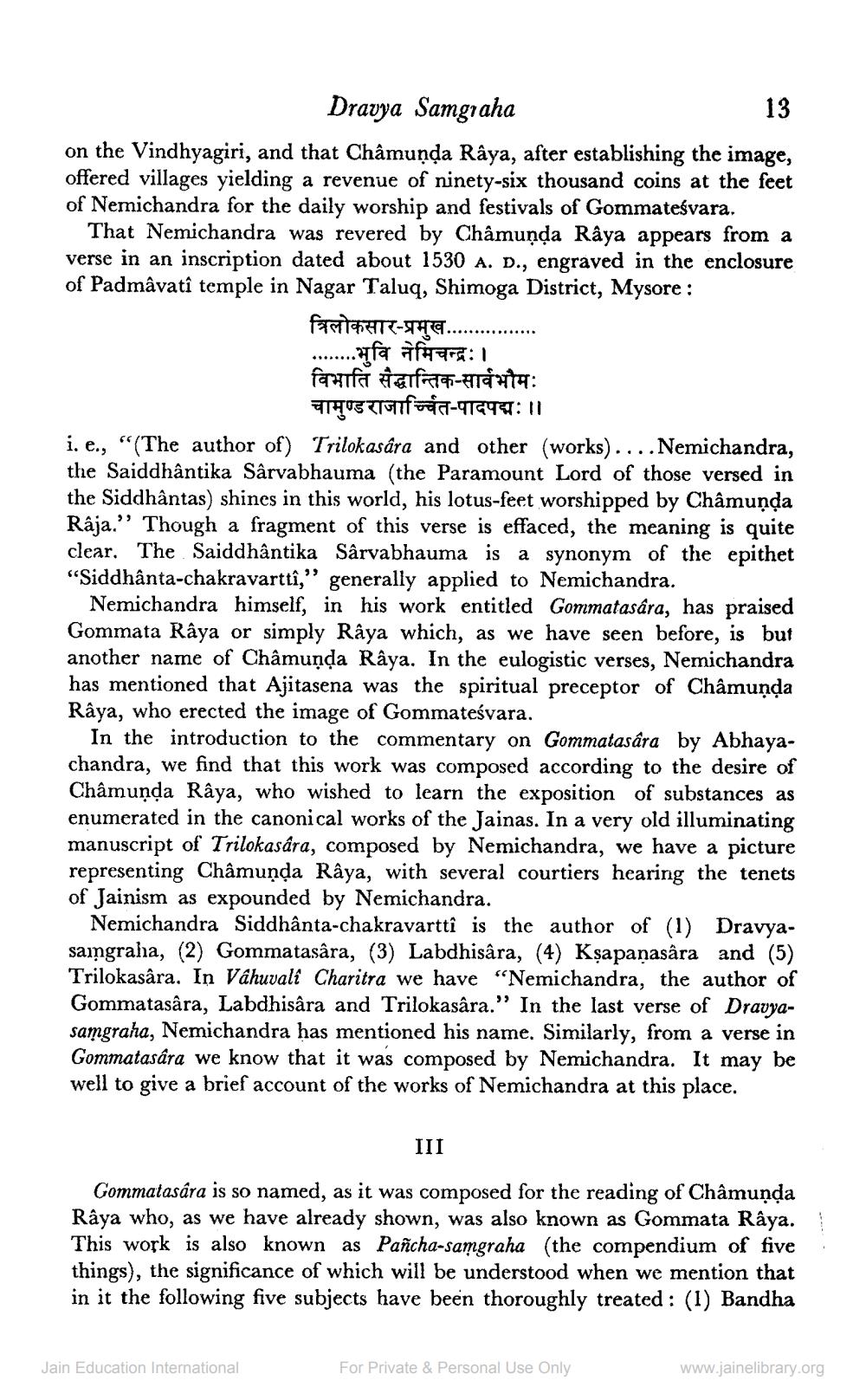________________
Dravya Samgraha on the Vindhyagiri, and that Châmunda Raya, after establishing the image, offered villages yielding a revenue of ninety-six thousand coins at the feet of Nemichandra for the daily worship and festivals of Gommateśvara.
That Nemichandra was revered by Châmunda Râya appears from a verse in an inscription dated about 1530 A. D., engraved in the enclosure of Padmâvatî temple in Nagar Taluq, Shimoga District, Mysore :
FTTTT-THC .............. ........fa : विभाति सैद्धान्तिक-सार्वभौमः
चामुण्डराजार्चित-पादपद्मः ।। i. e., “(The author of) Trilokasära and other (works)....Nemichandra, the Saiddhântika Sârvabhauma (the Paramount Lord of those versed in the Siddhântas) shines in this world, his lotus-feet worshipped by Châmunda Raja." Though a fragment of this verse is effaced, the meaning is quite clear. The Saiddhântika Sârvabhauma is a synonym of the epithet “Siddhanta-chakravarttî," generally applied to Nemichandra.
Nemichandra himself, in his work entitled Gommatasara, has praised Gommata Râya or simply Râya which, as we have seen before, is but another name of Châmunda Raya. In the eulogistic verses, Nemichandra has mentioned that Ajitasena was the spiritual preceptor of Châmunda Raya, who erected the image of Gommateśvara.
In the introduction to the commentary on Gommatasära by Abhayachandra, we find that this work was composed according to the desire of Châmunda Râya, who wished to learn the exposition of substances as enumerated in the canonical works of the Jainas. In a very old illuminating manuscript of Trilokasára, composed by Nemichandra, we have a picture representing Châmunda Râya, with several courtiers hearing the tenets of Jainism as expounded by Nemichandra.
Nemichandra Siddhanta-chakravarttî is the author of (1) Dravyasamgraha, (2) Gommatasara, (3) Labdhisâra, (4) Kșapaņasâra and (5) Trilokasára. In Vâhuvalí Charitra we have “Nemichandra, the author of Gommatasara, Labdhisära and Trilokasâra." In the last verse of Dravyasamgraha, Nemichandra has mentioned his name. Similarly, from a verse in Gommatasâra we know that it was composed by Nemichandra. It may be well to give a brief account of the works of Nemichandra at this place.
III
Gommatasára is so named, as it was composed for the reading of Châmunda Râya who, as we have already shown, was also known as Gommata Râya. This work is also known as Pañcha-samgraha (the compendium of five things), the significance of which will be understood when we mention that in it the following five subjects have been thoroughly treated : (1) Bandha
Jain Education International
For Private & Personal Use Only
www.jainelibrary.org




